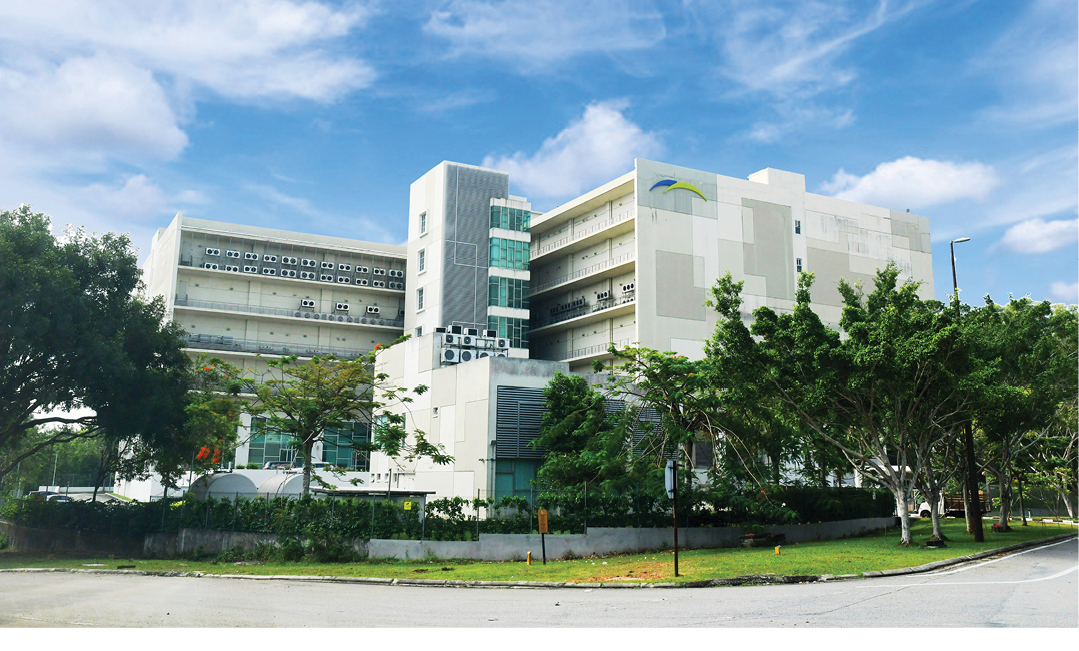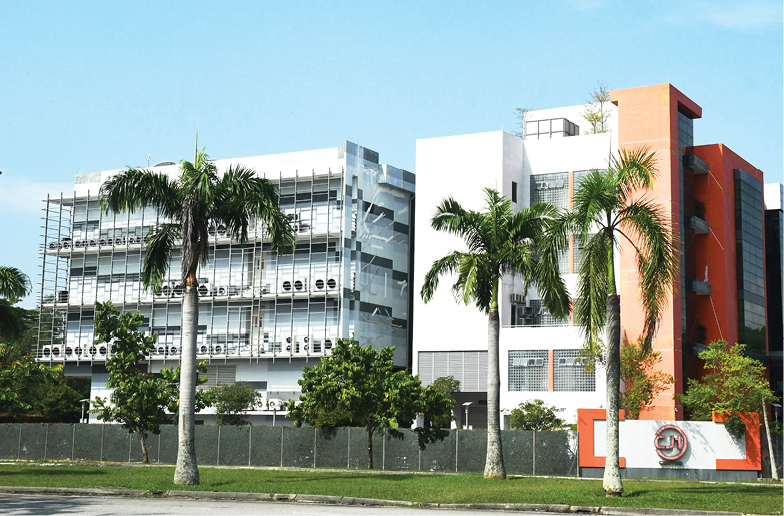
As landowners and real estate players vex over the dismal property outlook amidst the Covid-19 pandemic, another alternative asset class has emerged from the robust e-commerce to open up many business opportunities – data centre.
According to JLL Property Services (M) Sdn Bhd’s latest report released on Nov 5, 2020, logistics and data centre markets have accelerated in the Asia-Pacific region and primarily driven up industrial market transactions by 76% year-on-year (y-o-y) in the third quarter of 2020 (3Q20).
Read also
Do you know that data centres are classified into several tiers?
Cyberjaya - Seven things to take note of for homeseekers
In comparison, office transactions went down 35%, while retail and hotel transactions fell 51% and 87% y-o-y respectively during the quarter.
JLL Property Services country head YY Lau, in the report, said that Malaysia is also seeing healthy interest in the logistics and data centre market.
International Data Corp (IDC), in its report dated Oct 2019, estimated that there will be 41.6 billion connected Internet of Things (IoT) devices, generating 79.4 zettabytes (ZB) of data in 2025. One ZB is equivalent to one trillion gigabytes. These data have to be stored somewhere.

Many companies are also moving their professional applications to cloud services to cut back on the cost of running their own centralised computing networks and servers.
The cloud doesn’t mean that the applications and data are not housed on computing hardware. It just means that someone else maintains the hardware and software at remote locations where the clients and their customers can access them via the Internet. And those locations are data centres, based on HowStuffWorks’ definition.

Looking at the increasing demand for data storage space, Savills Malaysia managing director Datuk Paul Khong says cloud storages are made possible by these data centres, which store, process and disseminate data.
“This sector is coming in as a relatively new asset class on its own, as data centres continue to play an important role in ensuring the continuity of daily business operations, housing critical and proprietary assets for organisations,” he tells EdgeProp.my.
Location of data centres
Currently there are more than 30 data centres in Malaysia, mainly focused in Cyberjaya, Kuala Lumpur with a few additions in Selangor and Iskandar Malaysia, Johor.

Khong says Malaysia has attracted neighbouring countries such Singapore to set up data centres here, leveraging the former’s advantages in proximity, spacious land and well-equipped facilities.
For instance, Singapore’s Keppel Data Centres Holding and Alpha Data Centre Fund have jointly developed a Tier III-equivalent data centre for a third-party customer in Johor.
“In Aug 2020, the Johor state government announced that global technology giant Microsoft is building a data centre in the Kulai district. The data centre is known as Keppel DC Malaysia 1 Data Centre and is expected to begin operations in 2021,” adds Khong.

On data centre buildings, he notes the design of the data centre could be a standalone building, like the data centres in Cyberjaya’s enterprise or commercial zones, while data centres located outside Cyberjaya are mostly located in industrial zones.
“Power supply (dual sources or more) and fibre provision are both important factors in choosing a location,” he adds.
Purpose-built data centres are typically industrial-type buildings as they require large amounts of open space, high ceilings and high specification on floor loading to support the weight of equipment, says Sam Lee, managing director of Lendlease Data Centres.
“Additionally, zoning requirements more often require data centres to be located in industrial- classified zoning areas. Critical to the operation of a data centre is the availability of services and utilities such as power, water (for cooling) and telecommunications networks,” he adds.
Cyberjaya, hot spot for data centre
In Malaysia, Cyberjaya has maintained its status as the number one hot spot for data centres in Malaysia due to its complete infrastructure and dark fibre provision.
IVPS Real Estate Sdn Bhd (Alliance Member of Cushman & Wakefield) country manager Tiffany Goh says more than 90% of existing data centres in Malaysia are located in Cyberjaya.
“Other possible locations promoted by the government are in Negeri Sembilan and Melaka, as well as Johor Bahru or Iskandar region, which is promoted with the intention to capture the spillover demand from Singapore,” she adds.
Besides basic infrastructure, Goh notes another key element that attracts investors or data centre operators are locations with easy accessibility to other transportation hubs like airports and train lines.
“Other requirements include the stability of the site condition, such as water bodies and soil condition. If the data centres are in industrial areas, the operators will try to avoid heavy industrial parks,” she adds.
Lendlease’s Lee shares similar sentiments. “A significant amount of development has happened in Cyberjaya over the past five years, driven by multiple factors such as support from the government to target high-tech development, accessibility to power, availability of land and ability to own freehold land and property,” he says.

Data centres as defensive assets
Based on Savills Research data, data centres are increasingly being seen as a defensive asset class with appeal to global institutions.
The regional transaction volume of US$0.74 billion (RM3.05 billion) recorded in the first half of 2020 already bypassed the 2019 total of US$0.70 billion, and a couple of large portfolio deals are now in the pipeline, accounting for more than US$1.56 billion.
In the longer term, China is likely to emerge as Asia’s largest market, closely followed by Japan, says Savills’ Khong, adding that the outlook of data centres remains bright moving forward, as the demand for data centres continues to rise with technology advancement.
“We expect the Malaysian data centre industry to continue its growth in the next five years. As at the current juncture, there are limited large hyperscale players in this region.
As the global economy faces pressure from the Covid-19 pandemic, Lendlease’s Lee observes that demand and investment for data centres are on the rise all throughout the world, especially in Southeast Asia. Malaysia will continue to experience an increase in all these activities, which will continue to push the demand for data centre space.

Lee concurs that data centres have proven to be a resilient investment asset class over the past several years, especially so during the Covid-19 pandemic.
Internet usage and cloud adoption was on an upward trend prior to the outbreak, and that growth has only accelerated since then. As such, data centres as an investment continue to maintain a healthy outlook on returns (relative to traditional real estate) and will likely continue into the foreseeable future.
“Data centres are becoming an increasingly important part of business operations as well as mainstream real estate asset class. With mature and expanding economies, Asia is expected to show exponential growth in data usage,” adds Lee.
Meanwhile, Cushman & Wakefield director of logistics and industrial Lynus Pook says data centre businesses are registering positive growth over the years. For instance, RM1.592 billion of revenue was recorded for year 2019, an increase of 19% from year 2018 (RM1.288 billion).
He notes that double-digit growth is expected in the medium term for this business since government agencies and even small companies have been looking at this cloud adoption business more aggressively in 2020.
“Although there is tough competition from markets like Singapore, Hong Kong and Japan, the market in Malaysia is growing due to low overhead costs such as cheaper and abundant land,” Pook adds.
Hence, he opines that the government plays an important role in attracting investors by promoting the country’s ICT development through continued provision of attractive incentives or rebates for data centres players, 100% foreign participation coupled with the readiness of infrastructure and abundance of land.
What is a data centre?
According to infotainment website HowStuffWorks, data centres are “simply centralised locations where computing and networking equipment is concentrated for the purpose of collecting, storing, processing, distributing, or allowing access to large amounts of data. They have existed in one form or another since the advent of computers”.

Entities that utilise or produce a large amount of data have the need for data centres. For instance, telecommunication firms, government agencies, financial institutions, social networking services (Facebook and Google) and even retailers.
“Lack of fast and reliable access to data can mean an inability to provide vital services or loss of customer satisfaction and revenue,” says HowStuffWorks.
This story first appeared in the EdgeProp.my e-Pub on Nov 13, 2020. You can access back issues here.
Get the latest news @ www.EdgeProp.my





